11 Must-Do Activities in Muscat – From Souqs to Stunning Coastlines

Muscat, the enchanting capital of Oman, is a city that hosts lots of ancient traditions. From breathtaking architecture to stunning coastal landscapes, Muscat offers a unique experience for travelers seeking history, adventure, and relaxation. Here are the 11 best things to do in this captivating city. 1. Visit the Sultan Qaboos Grand Mosque One of the most magnificent landmarks in Muscat, the Sultan Qaboos Grand Mosque is a masterpiece of Islamic architecture. Open to non-Muslim visitors in the mornings, the mosque boasts an enormous chandelier, an intricately designed prayer carpet, and stunning marble interiors. Remember to dress modestly when visiting. 2. Explore the Mutrah Souq For a taste of Omani culture, a visit to Mutrah Souq is a must. This traditional market is a labyrinth of narrow alleyways filled with the scent of frankincense, stalls selling silver jewelry, textiles, and handcrafted souvenirs. Bargaining is expected, so don’t be afraid to negotiate for the best price. 3. Stroll Along the Mutrah Corniche The Mutrah Corniche offers one of the most picturesque waterfront walks in Muscat. With stunning views of the harbor, the historic Mutrah Fort, and traditional dhows sailing across the bay, this is a perfect spot for an evening stroll, especially at sunset. 4. Discover Al Jalali and Al Mirani Forts Overlooking the sea, these twin forts (Al Jalali and Al Mirani) were built by the Portuguese in the 16th century to protect Muscat from invaders. While they are not open to the public, you can admire their impressive architecture from the outside and take in the panoramic views of the harbor. 5. Visit the Royal Opera House Muscat A symbol of Oman’s cultural renaissance, the Royal Opera House Muscat hosts world-class performances in a grand setting. Even if you don’t catch a show, guided tours allow you to admire the exquisite interiors and learn about Oman’s appreciation for the arts. 6. Explore the National Museum of Oman Located near Al Alam Palace, the National Museum showcases Oman’s rich heritage through interactive exhibits, ancient artifacts, and beautifully curated galleries. It’s the perfect place to gain insight into the country’s history and traditions. 7. Relax at Qurum Beach For a laid-back experience, head to Qurum Beach, a long stretch of golden sand lined with palm trees. It’s a popular spot for locals and tourists alike, offering a tranquil escape with opportunities for swimming, picnicking, or simply enjoying the view. 8. Take a Boat Trip to the Daymaniyat Islands Nature lovers shouldn’t miss a boat trip to the Daymaniyat Islands, a protected marine reserve teeming with vibrant coral reefs and marine life. Snorkeling and diving here offer a chance to see sea turtles, tropical fish, and even whale sharks during the right season. 9. Visit the Al Alam Palace One of the most recognizable landmarks in Muscat, Al Alam Palace is the ceremonial residence of the Sultan of Oman. While visitors cannot enter the palace, its striking facade, flanked by Al Jalali and Al Mirani Forts, makes for a great photo opportunity. 10. Try Omani Cuisine at a Traditional Restaurant No visit to Muscat is complete without sampling local dishes. Head to a traditional Omani restaurant and try shuwa (slow-cooked lamb), majboos (spiced rice with meat), and halwa (a sweet dessert made with rosewater and saffron). 11. Explore Wadi Shab A short drive from Muscat, Wadi Shab is a breathtaking canyon with turquoise pools, waterfalls, and hidden caves. A short hike leads to a stunning natural pool where you can swim through a narrow rock passage to reach a hidden waterfall inside a cave. Final Thoughts Muscat is a city filled with character, where ancient traditions blend seamlessly with contemporary charm. Its bustling souqs, impressive landmarks, and stunning coastal scenery create an experience that stays with travelers long after they leave. These 11 activities showcase the best of what Muscat has to offer, making it a must-visit destination in Oman – and if you’re planning a trip, you should consider joining our Oman ladies trip for a full experience.
Ultimate 10-Day Oman Itinerary: Desert, Wadis, Cities & Culture

Oman is a destination where tradition meets untouched nature, offering landscapes that range from golden dunes to turquoise waters and bustling souqs. This 10-day itinerary covers the best of the country, ensuring a balanced experience of adventure, relaxation, and culture. Day 1: Arrival in Muscat and City Exploration Begin your journey in the capital, a city that blends ancient heritage with contemporary charm. Visit the Sultan Qaboos Grand Mosque, an architectural masterpiece, followed by the Mutrah Souq, where the scent of frankincense and spices fills the air. Stroll along the Mutrah Corniche, offering scenic views of the harbor. End the day with a local dinner, trying dishes like shuwa or majboos. Day 2: Nizwa Fort and Traditional Market Head early to Nizwa, a historic city famous for its fort and vibrant marketplace. Explore Nizwa Fort, which offers panoramic views of the city and the Hajar Mountains. At the souq, browse silver jewelry, pottery, and premium dates. If visiting on a Friday, the livestock market is a unique experience where traders negotiate for goats and cattle. Day 3: Bahla and Jabrin – Historical Treasures Continue to Bahla, a UNESCO World Heritage site known for its impressive mud-brick fort. Then, visit Jabreen Castle, one of Oman’s best-preserved forts, adorned with intricate carvings and painted ceilings. Return to Nizwa or continue to Al Hamra, a picturesque village showcasing traditional Omani architecture. Day 4: Jebel Shams and Oman’s Grand Canyon Venture to Jebel Shams, Oman’s highest mountain, home to breathtaking canyon views. Hike the Balcony Walk, a trail offering stunning scenery. For a memorable experience, enjoy a picnic at the summit. If time allows, visit Misfat Al Abriyeen, a charming village with stone houses and ancient irrigation channels. Day 5: Wahiba Sands – A Desert Adventure Swap the mountains for the vast dunes of Wahiba Sands, home to Bedouin communities. Stay overnight in a desert camp for a full experience. Activities like sandboarding, camel riding, and watching the sunset over the dunes make this day unforgettable. Day 6: Wadi Bani Khalid – A Natural Oasis After the desert adventure, unwind at Wadi Bani Khalid, a popular and easily accessible wadi known for its practicality rather than its remoteness. A wadi is a valley or riverbed that remains dry for most of the year but fills with water after rainfall, creating natural pools. Wadi Bani Khalid stands out for its large parking area, lifeguards, and on-site restaurant, making it a favorite for families. The clear waters surrounded by palm trees offer a refreshing stop before continuing to Sur, a peaceful coastal city. Day 7: Sur and Ras Al Jinz – Beaches and Turtles Explore Sur, renowned for its dhow-building tradition. Visit the Al Ayjah Lighthouse and stroll along the bay, where the white-washed houses reflect on the water. In the evening, head to Ras Al Jinz, a nature reserve where sea turtles come ashore to lay eggs. Visitors should respect these endangered creatures by keeping a safe distance, avoiding flash photography or strong lights, and minimizing noise to prevent disturbance. Guided tours ensure a responsible experience, allowing you to witness this incredible natural event without harming the turtles or their habitat. Day 8: Wadi Shab and the Coastal Route One of Oman’s must-visit spots is Wadi Shab, accessible only after a scenic hike that leads to a hidden cave with a natural pool. After the adventure, stop by Fins Beach to enjoy the sea before returning to Muscat. Day 9: Cultural Experiences and Shopping in Muscat Dedicate the day to exploring more of the capital. Visit the Royal Opera House, stroll through the gardens of Al Alam Palace, and learn about the country’s heritage at the National Museum of Oman. For shopping, choose between the traditional Mutrah Souq and the modern Mall of Oman, offering everything from handicrafts to international brands. Day 10: Beach Relaxation or Water Activities Wrap up your journey with a day by the sea. Qurum Beach is perfect for a morning walk, while Bandar Al Khiran provides calm waters for snorkeling. For an exclusive experience, take a boat trip to the Dimaniyat Islands, where vibrant coral reefs and marine life create an unparalleled setting. Conclusion There are so many things to see and discover in Oman, 10 days wouldn’t be enough! However, this itinerary offers a glimpse of Oman’s treasures. If you want to experience it without the hassle of planning, join our trip to Oman. We take care of the details so you can focus on exploring wadis, walking through ancient forts, and watching the sunset over the desert.
Salalah: Best Places to Visit and the Magic of Khareef Season

Salalah, the jewel of southern Oman, is a destination that surprises travelers with its lush landscapes, historical sites, and unique monsoon season known as Khareef. While the city is a year-round attraction, visiting during Khareef transforms it into a green paradise unlike any other in the Arabian Peninsula. Here’s everything you need to know about the best places to visit and why Khareef is the perfect time to explore this stunning destination. How to Reach Salalah Salalah International Airport is the primary gateway to the city, offering flights from major destinations. Travelers can fly from Muscat to Salalah with Oman Air or SalamAir, with fares starting at approximately $80 USD. Those coming from Dubai can opt for flydubai, with tickets starting at about 800 AED ($280 USD). Prices may increase during the peak Khareef season, so booking in advance is recommended. Alternatively, visitors can drive from Muscat, a long journey of around 9-10 hours covering approximately 1,040 kilometers via Route 31. While a 4×4 is not required for the drive, it is recommended for off-road explorations in and around Salalah. Best Places to Visit in Salalah Why Khareef is the Best Time to Visit Salalah Khareef, which occurs from June to September, brings monsoon rains that transform Salalah into a lush, green haven. The temperatures drop significantly compared to the rest of the Arabian Peninsula, making it an ideal escape from the summer heat. The season also hosts the Khareef Festival, a cultural celebration with traditional music, dance, and local delicacies. How to Experience Salalah During Khareef To fully embrace Salalah’s transformation during Khareef, consider joining our Salalah trip, designed to take you to the heart of its most breathtaking locations. Our trip ensures you experience the best of Salalah in its most magical season. Plan your visit to Salalah during Khareef and witness the Arabian Peninsula like never before—a land of waterfalls, misty mountains, and vibrant landscapes that defy expectations. Beach Safety During Khareef While Salalah’s beaches are stunning, they can be dangerous during Khareef. The Arabian Sea experiences rough waves, and many beaches are closed due to strong currents. Family-friendly spots are generally safer as they attract more visitors and often have lifeguards. If you plan to explore more remote areas, it’s best to exercise caution and seek local guidance.
Musandam: A Must-Visit Destination in Oman

Located in the northernmost part of Oman, the Musandam enclave is a stunning destination popular for its breathtaking landscapes and adventure opportunities. Separated from the rest of the country by the United Arab Emirates, this mountainous region offers spectacular fjords, rich marine life, and exciting activities. Whether for a short Musandam trip or a full Musandam day trip, visitors will find plenty to explore. A Unique Landscape: Arabian Fjords and Crystal-Clear Waters Musandam is famous for its fjords, often called “The Norway of Arabia.” Unlike Scandinavian fjords, the arid cliffs here plunge into turquoise waters, creating a striking contrast. The best way to explore them is aboard a traditional dhow, the region’s characteristic wooden boat. These tours allow visitors to spot dolphins, swim in hidden coves, and snorkel in marine-rich waters. Most boat trips also include local food such as rice, salads, and drinks, ensuring a relaxing experience. Sadly, some areas suffer from pollution, including plastic bottles, cans, and other trash. Visitors are encouraged to respect the environment and keep the area clean. Khasab: The Gateway to Musandam The capital, Khasab, is a peaceful port town that serves as a base for exploration. The Khasab Fort, built in the 17th century by the Portuguese, has been restored to highlight local history. From the port, dhows set off to the fjords. 4×4 excursions take visitors to Jebel Harim, the highest peak in Musandam at 2,087 meters. The summit offers breathtaking panoramic views. Adventure in the Heights: Jebel Harim and Musandam’s Mountains Musandam is an ideal destination for adventure lovers. The rocky mountains hide ancient petroglyphs and small isolated villages. 4×4 routes reveal winding trails through gorges and cliffs. For a more immersive experience, travelers can hike to enjoy the tranquil landscape. Diving and Snorkeling in Musandam The waters are a paradise for divers. Marine biodiversity includes vibrant corals, schools of colorful fish, nurse sharks, and rays. Lima Island and Telegraph Island are among the best diving spots. The latter played a key role in the 19th-century telecommunication link between India and Europe. How to Get to Musandam Musandam is easily accessible by road from Dubai and other parts of the UAE, making it an ideal escape for residents and visitors alike. Travelers can drive their own cars or book with agencies offering bus pickups from Dubai for added convenience. UAE residents can also obtain an e-visa online for a smooth travel experience. For those who want more than just a Musandam day trip, staying overnight is a great option. Visitors can choose from hotels, city explorations, hiking, or even camping near the beach for a full weekend experience. Plan Your Musandam Trip This place combines history, breathtaking landscapes, and adventure. Whether sailing through fjords, exploring historic forts, or diving in crystal-clear waters, this region offers an unforgettable experience. While we do not cover Musandam in our Oman tour, we can help arrange a Musandam day trip through a trusted partner. For those interested in a full Omani experience, we recommend joining our ladies’ Oman tour, which offers an immersive journey through the country’s rich culture and landscapes. If you visit Oman, Musandam is a must-see destination. It offers a blend of adventure, nature, and relaxation, making it perfect for all types of travelers.
Makkah Mall: Shopping, Dining, and Entertainment in the Heart of Mecca

Located in the Al Jamiah district on King Abdullah Road, Makkah Mall is one of the most important shopping centers in Mecca, Saudi Arabia. With more than 255 stores, this modern mall offers a shopping, dining, and entertainment experience ideal for both residents and travelers. With Mecca being known as a shopping destination as well as Saudi cities, this mall is a key spot for those looking for quality products in a comfortable and family-friendly setting. A shopping destination with major brands Makkah Mall features a mix of international brands and local stores. It offers everything from clothing and accessories to technology and perfumes. Some of the most notable brands include: Additionally, the mall houses a HyperPanda, one of the largest supermarkets in Saudi Arabia. This makes it ideal for those looking for both local and international products in one place. Dining options for all tastes The restaurant area at Makkah Mall offers a wide variety of options, from fast-food chains to international cuisine. Some of the most notable choices include: The dining selection is diverse and includes comfortable family-friendly spaces, as well as several takeout options—perfect for those visiting Mecca for religious purposes who may need quick meals before or after their activities. Entertainment and family activities Unlike other malls in Saudi Arabia, Makkah Mall places a strong emphasis on family entertainment. One of its main attractions is Billy Beez: an indoor play park for children, featuring tunnels, slides, and interactive play areas. With its family-oriented atmosphere and wide variety of stores and restaurants, this shopping center is an ideal place to spend the day, combining shopping with recreational activities for all ages. Location and hours Makkah Mall is easily accessible by car or public transportation and offers ample parking, making visits convenient even during peak seasons. Is Makkah Mall worth visiting? Makkah Mall is an excellent option for those looking for international brands, diverse dining options, and a family-friendly environment. Its strategic location and variety of stores make it a recommended stop for visitors.
Bawadi Market, Jeddah: A Must-Visit Spot for Travelers
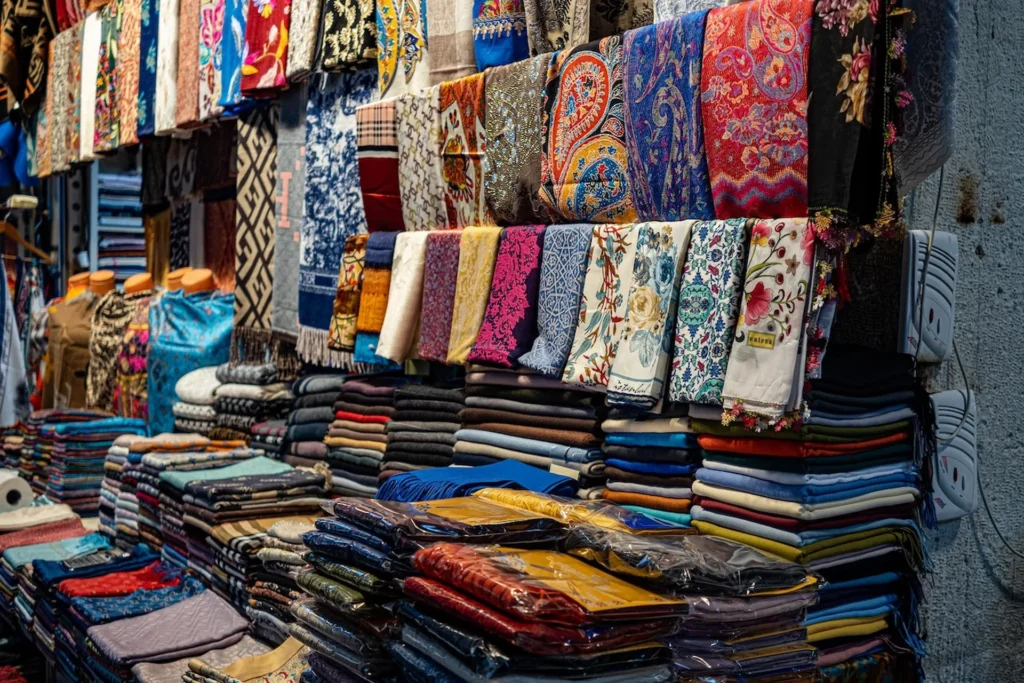
Located in the Al-Bawadi district of Jeddah, Bawadi Market is a vibrant commercial hub offering an authentic taste of Saudi culture. This traditional market serves as a meeting point for both locals and tourists, showcasing a wide range of products that reflect the rich diversity of the region. Since its establishment, Bawadi Market has become an essential part of Jeddah’s daily life. Its narrow streets are lined with stalls selling everything from local handicrafts to traditional clothing, creating an atmosphere that blends the old with the new. The market’s architecture, featuring wooden windows known as roshan, is a testament to the region’s architectural heritage. Shopping Experience Visitors to Bawadi Market can explore a variety of products, including: Gastronomic Experience The market is also known for its diverse culinary offerings. Among the food stalls, Filipino street food stands out, reflecting Jeddah’s large expatriate community. Visitors can try dishes like skewers, empanadas, and other traditional snacks, providing an opportunity to taste international flavors in a local setting. Tips for Visitors How to Get There Bawadi Market is located on Ibn Alwan Street in the Al-Bawadi district. It is accessible by car, and public transportation options are available from different parts of the city. For those driving, parking is available near the market. Conclusion Bawadi Market isn’t just a place to shop—it’s a window into the daily life and cultural diversity of Jeddah. The energy of the market, the mix of voices bargaining in different languages, and the scent of spices lingering in the air create an experience that feels both authentic and dynamic. Travelers can find unique souvenirs, taste flavors from different communities, and witness the rich traditions that make this market a key part of the city. It’s not just a stop on an itinerary but a place to connect with the pulse of Jeddah.
New Jeddah Corniche: The Coastal Heart of Saudi Arabia
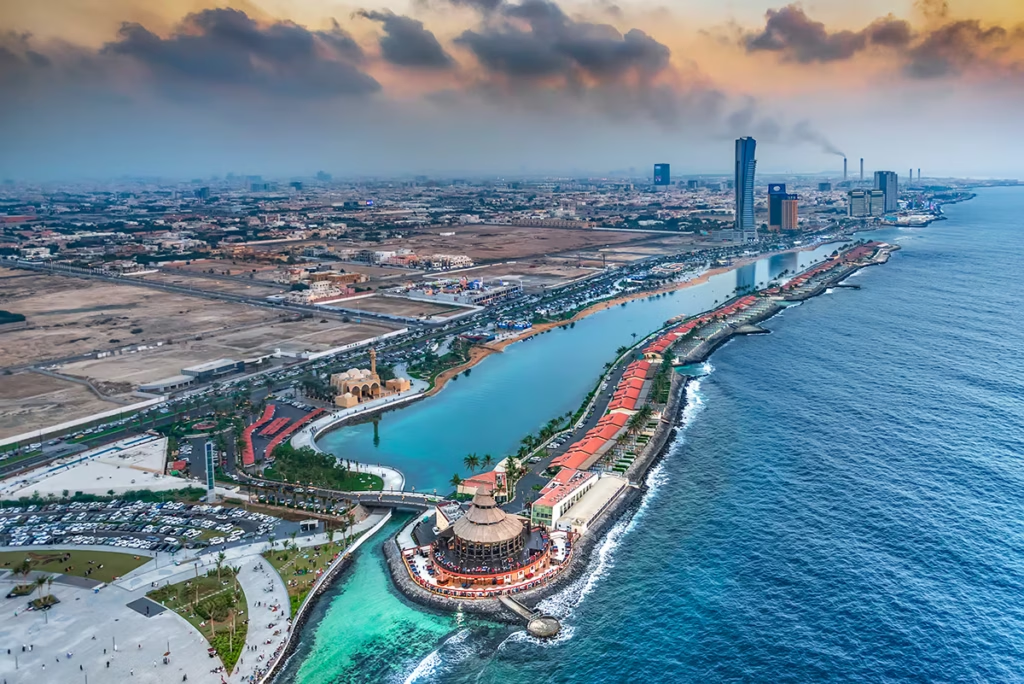
Jeddah, the incredible coastal city of Saudi Arabia, is a destination where modernity and history blend against the backdrop of the Red Sea. Among its many attractions, the New Jeddah Corniche stands out as one of the city’s most iconic recreational areas. With its impressive waterfront seaside promenade, green spaces, public art sculptures, and a diverse gastronomic offering, this place has become a landmark for both locals and tourists alike. Location and Accessibility Located on Jeddah’s western coast, the New Jeddah Corniche stretches over 30 kilometers of coastline. Its easy access from the city center and proximity to King Abdulaziz International Airport make it an ideal stop for those looking to relax by the waterfront without venturing too far from the urban hub. Additionally, its connectivity to key areas like Al-Balad, Jeddah’s historic district, allows visitors to combine a coastal stroll with an immersion into Saudi heritage. Must-See Attractions and Activities 1. King Fahd Fountain One of Jeddah’s most recognizable landmarks is the King Fahd Fountain, located along the Corniche. With a water jet reaching 312 meters high, it is the tallest fountain in the world and one of the most photographed sights in the city, especially at sunset when it is beautifully illuminated. 2. Seaside Walks and Cycling The Corniche’s pathways invite walkers, joggers, and cyclists to enjoy the fresh air and panoramic views of the Red Sea. Thanks to its spacious areas and modern infrastructure, it is an ideal place for exercise or simply strolling while the sea breeze provides a refreshing atmosphere. 3. Outdoor Art Jeddah is known as Saudi Arabia’s capital of public art, and the Corniche is home to some of the city’s most impressive sculptures. Works by international and local artists adorn the promenade, turning it into an open-air museum where every corner offers a new visual surprise. 4. Beaches and Recreational Areas Rest areas and public beaches make it the perfect spot for those looking to unwind by the sea. There are designated family areas, children’s play zones, and safe swimming spots. Additionally, the waters of the Red Sea are famous for their biodiversity, making the Corniche an excellent starting point for those wanting to explore the underwater world through snorkeling or diving. 5. Dining with a View From cozy cafés to fine-dining restaurants, the New Jeddah Corniche offers a wide variety of culinary options. Visitors can savor traditional Saudi dishes, fresh seafood, and international cuisine while enjoying an unrivaled sunset view over the waterfront. 6. Events and Nightlife Throughout the year, the Corniche hosts festivals, fireworks displays, and cultural events that attract thousands of visitors. At night, the area takes on a special energy with its vibrant lighting, making it an ideal place to experience the city from a different perspective. 7. Al Rahma Mosque A stunning architectural gem located along the Corniche, Al Rahma Mosque appears to float on the waters of the Red Sea. Also known as the Floating Mosque, this beautiful structure blends traditional Islamic design with modern elements, making it a serene and photogenic spot for visitors and worshippers alike. A Symbol of Jeddah’s Modernization The development of the New Jeddah Corniche is part of Saudi Arabia’s vision to modernize its cities and diversify its economy through tourism. This transformation has turned the Corniche into a destination that not only enhances the city’s beauty but also strengthens its global appeal as a hub for entertainment and recreation.
Top Things to Do in Al Madinah – A Complete Guide to the Holy City
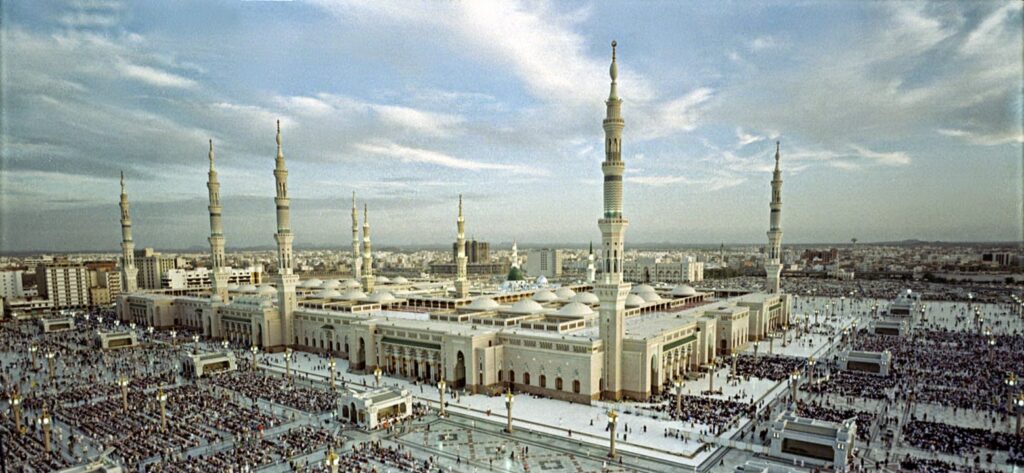
Al Madinah, also known as Medina, is one of the most sacred cities in Islam and an essential destination for those who want to immerse themselves in its history, culture, and spirituality. In addition to its iconic religious sites, the city offers a variety of activities that showcase its rich legacy and unique atmosphere. Summary 1. Visit the Prophet’s Mosque (Al-Masjid an-Nabawi) One of the most significant landmarks in the city, this mosque is the second holiest site in Islam and houses the tomb of Prophet Muhammad (pbuh). Its breathtaking architecture and spiritual atmosphere make it a key location for pilgrims and visitors alike. 2. Pray at Quba Mosque Recognized as the first mosque in Islamic history, it was built by Prophet Muhammad (pbuh) himself. It is believed that offering a prayer here is equivalent to the reward of performing an Umrah, making it a highly revered site for Muslims. 3. Explore the Mosque of the Two Qiblas (Masjid al-Qiblatain) This is the place where the revelation was received that changed the direction of prayer from Jerusalem to Mecca. Its historical significance and architectural design make it an essential stop. 4. Tour the Dar Al Madinah Museum For those interested in Islamic history, this museum offers a detailed view of the life of Prophet Muhammad (pbuh), the city’s evolution, and its importance throughout the centuries. Its exhibits include artifacts, documents, and interactive reconstructions. 5. Visit the Hejaz Railway Museum This museum tells the story of the historic railway that connected Damascus to Medina in the early 20th century. Here, you can see restored locomotives and learn about the significance of this route in the region’s development. Although the museum is temporarily closed, check opening times to plan your visit. 6. Discover the city with the Big Bus Tour To explore Al Madinah comfortably, the Big Bus Tour is an excellent option. With stops at key landmarks such as the Prophet’s Mosque, Quba Mosque, Al Masjid an Nabawi, among others, it allows visitors to tour the city while enjoying audio guides available in multiple languages. The service works from 06:15 to 22:45 and pricing starts from $22 for adults and $11 for children. 7. Visit Mount Uhud This historic site was the scene of the Battle of Uhud, a crucial event in Islamic history. Visitors can explore the area where early Muslims fought and learn more about its spiritual and strategic importance. 8. Explore local markets For an authentic experience, visit the city’s traditional souks and markets, where you can find handicrafts, perfumes, Islamic clothing, and local sweets. It’s a great way to take home a special memory of Al Madinah. 9. Enjoy local cuisine The city offers a variety of traditional dishes, such as kabsa, high-quality dates, and Arabic coffee. Sampling the local cuisine is a delicious way to immerse yourself in the region’s culture. 10. Explore the Seven Mosques (Al-Masajid As-Sab’ah) This complex of six small historic mosques is linked to the Battle of the Trench and is a site filled with history and spirituality. Each mosque has a special significance, and together they form one of the most fascinating historical sites in the city. Conclusion Al Madinah is a captivating destination where history, faith, and culture come together. From its religious landmarks to its most authentic corners, the city offers a unique experience for those who seek to explore its Islamic heritage and special atmosphere.
Umrah: A Step-by-Step Guide to the Sacred Pilgrimage in Makkah
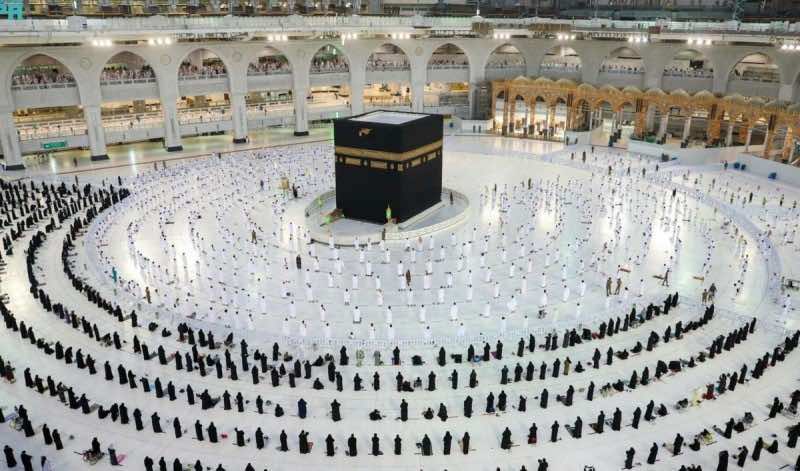
Umrah is a voluntary Islamic pilgrimage to the holy city of Makkah, which can be performed at any time of the year, unlike the Hajj, which is the fifth pillar of Islam and is obligatory for Muslims; also, it takes place on specific dates in the Islamic calendar. Nevertheless, Umrah is an act of deep devotion and an opportunity to purify the soul and strengthen one’s faith. For more information about these rituals, you can read here. Although it is not obligatory, Umrah holds great spiritual significance and is especially recommended during the sacred month of Ramadan, when spiritual rewards are multiplied. Essential Steps of Umrah Umrah consists of a series of sacred rituals that follow a clear structure: 1. State of Ihram (Consecration) Before entering Makkah, pilgrims must adopt Ihram, a state of purity that involves: 2. Tawaf (Circumambulation of the Kaaba) Once inside Masjid al-Haram, the pilgrim performs Tawaf, which consists of seven circuits around the Kaaba, the most sacred site in Islam. During Tawaf, worshippers recite prayers and try to touch the Black Stone (Hajar al-Aswad) if possible. When the Kaaba is found to the left, worshippers circumambulate (counterclockwise), so they both begin and end at the Black Stone. After the completion of seven rounds, every worshipper must pray two Rakaah in an appropriate place. 3. Sa’i (Walking between Safa and Marwa) After Tawaf, pilgrims walk seven times between the hills of Safa and Marwa, commemorating the sacrifice of Hagar (Hājar), the wife of Prophet Ibrahim, who desperately searched for water for her son Ismail until the Zamzam well miraculously sprang forth. Once reaching Marwa, pilgrims have completed one round. Crossing the distance back to Safa fulfills the second round, and so on until the seventh round ends at Marwa. 4. Tahallul (release from the state of Ihram) The final step is Tahallul, which symbolizes humility and the completion of the pilgrimage: With this act, the pilgrim exits the state of Ihram and completes Umrah. Sacred Sites in Makkah Every Pilgrim Should Visit Besides the Kaaba and the sites of Tawaf and Sa’i, there are other spiritually significant places in Makkah: Umrah During Ramadan: A Special Time Performing Umrah during Ramadan is highly recommended, as Prophet Muhammad (pbuh) stated that it carries the same reward as Hajj (although it does not replace it). During this month, Makkah welcomes millions of believers, creating an unparalleled spiritual atmosphere.The combination of fasting, nightly prayers (Tarawih), and Umrah makes Ramadan a unique period for reflection and spiritual growth.
The Best Museums in Makkah: A Guide to Islamic History and Culture
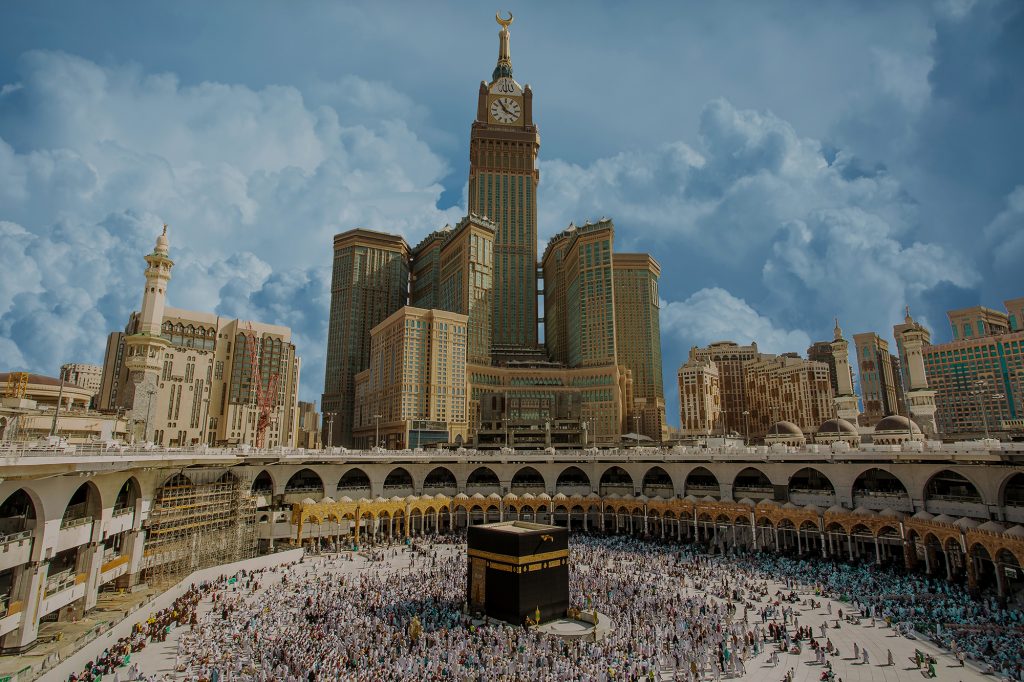
Makkah is the heart of the Islamic world, a sacred city visited by millions of pilgrims each year. However, beyond its religious significance, it is also rich in history and culture. The museums of Makkah offer a window into its past, allowing visitors to explore everything from the history of the Kaaba to the evolution of Islamic civilization. Here’s a selection of the best museums that you cannot miss in this sacred city. Summary 1. The Makkah Museum This museum is one of the best options for those who want to understand the transformation of the city over the centuries. It houses exhibitions on the urban history of Makkah, its early settlements, and how it has changed over time. Through models, old photographs, and historical documents, visitors can learn about the city’s growth and its role in Islamic history. Timings in the museum may vary so be sure to check opening times before your visit. 2. Exhibition of the Two Holy Mosques Located near the Grand Mosque, this museum is one of the most important in Makkah. It exhibits artifacts, manuscripts, and architectural pieces related to the Grand Mosque (Masjid al-Haram) and the Prophet’s Mosque in Medina (Masjid al-Nabawi). Its galleries include ancient doors of the Kaaba, Quranic inscriptions, and objects used in the maintenance of these sanctuaries. Though this exhibition is temporarily closed to the public, keep an eye on re-opening dates to plan your visit. 3. The Kaaba Museum The Kaaba is the center of the Islamic pilgrimage and has a fascinating history. This museum is dedicated exclusively to documenting the evolution of the Kaaba and its significance in Islamic religion. Its halls feature the fabrics that have covered the Kaaba over time, tools used in its maintenance, and documents detailing its renovations throughout history. 4. Other Notable Museums In addition to the mentioned museums, there are small galleries and private collections that house relics and rare manuscripts. Noteworthy examples include the Clock Tower Museum, which explores time measurement and astronomy, the Kiswa Factory of the Holy Kaaba, where visitors can witness the intricate process of crafting the Kaaba’s covering, and the Hira Cultural District, which offers historical insights near the sacred Hira Cave. Tips for Visiting Conclusion Exploring the museums of Makkah is a journey through time, offering insight into the city’s deep historical and spiritual roots. These museums hold invaluable artifacts, stories, and legacies that provide a deeper understanding of Islamic heritage.
